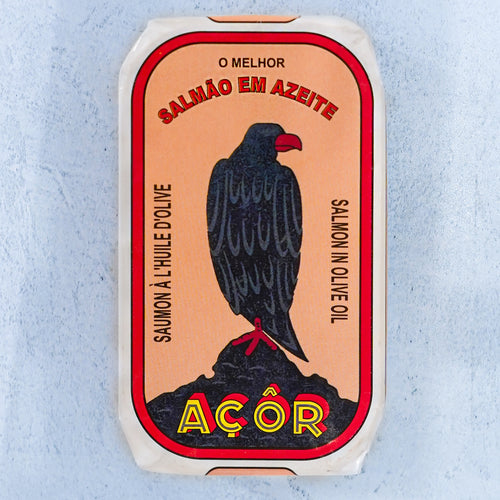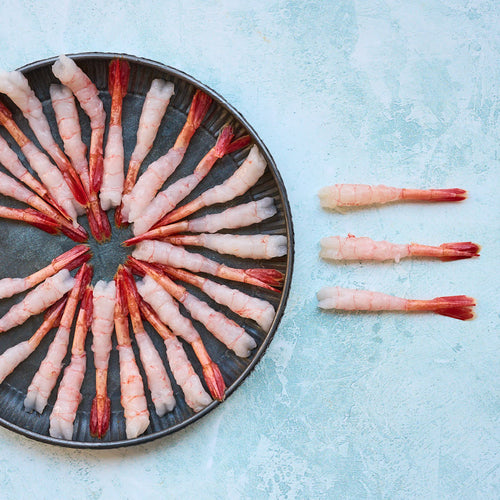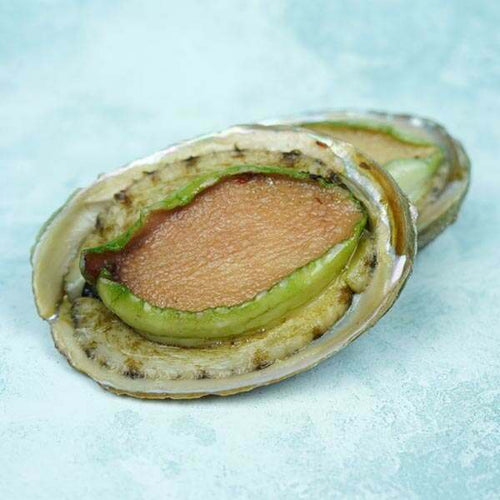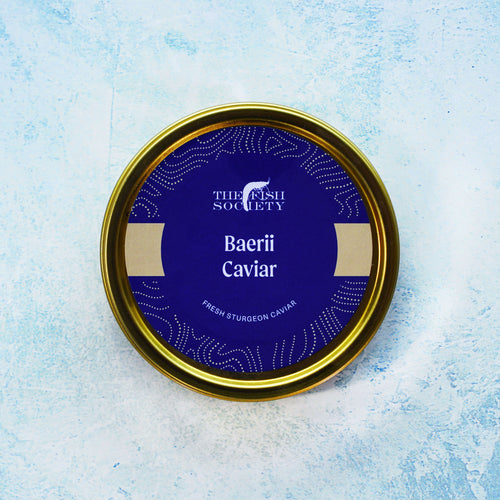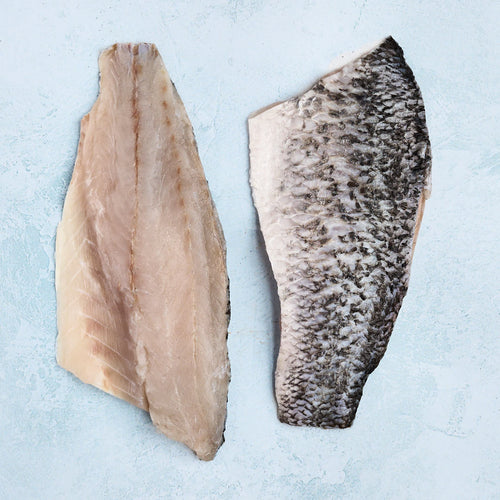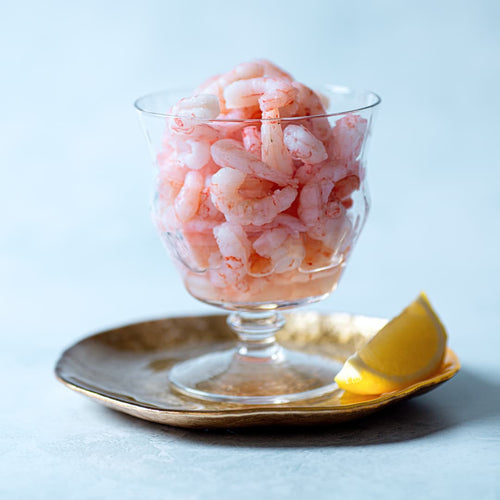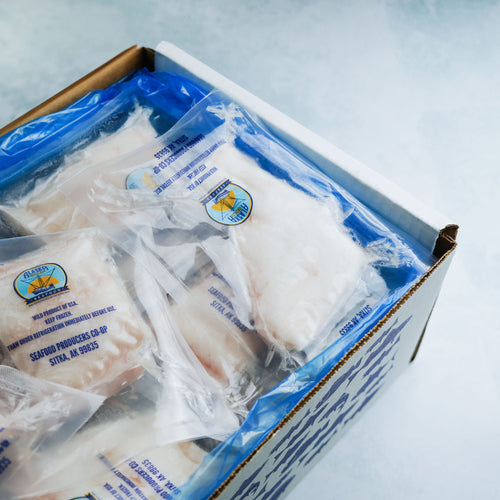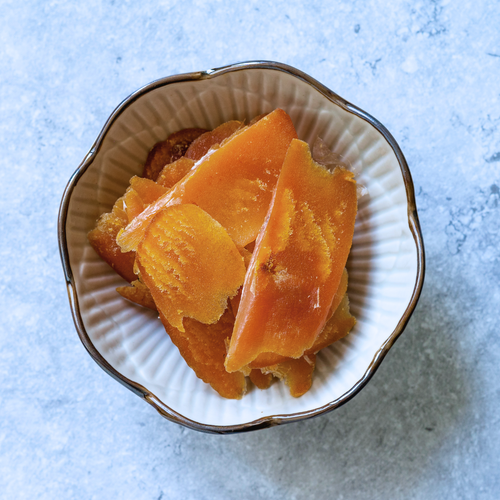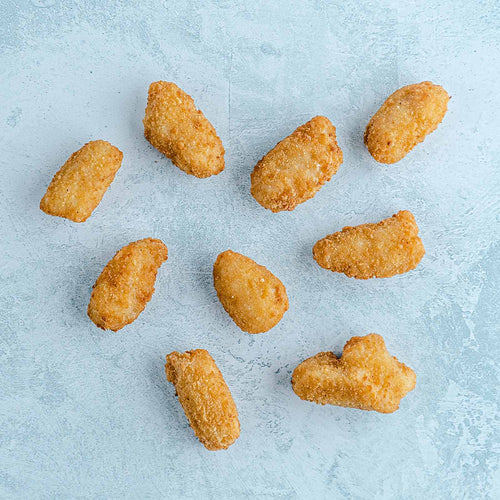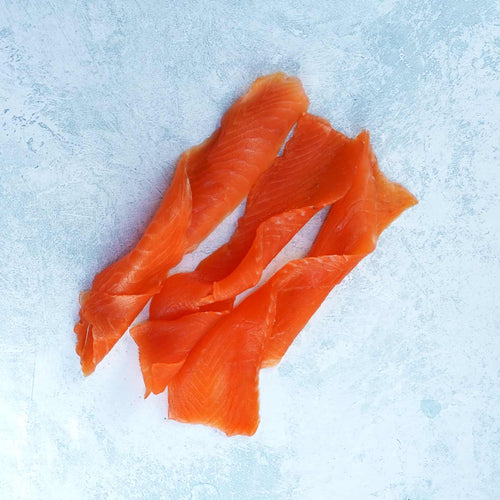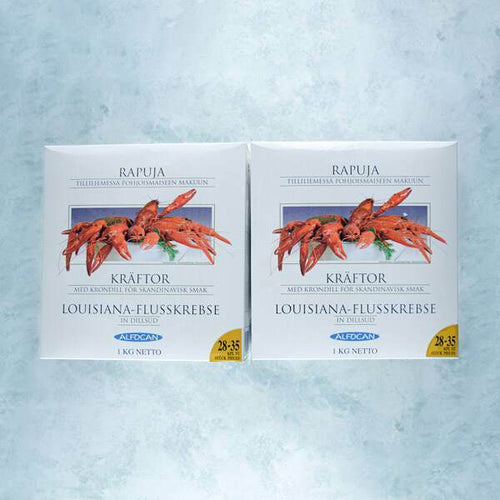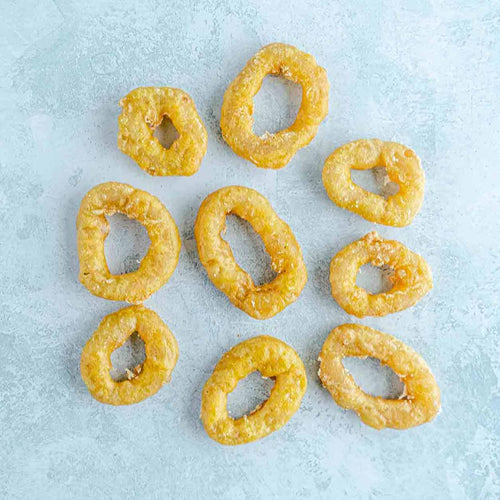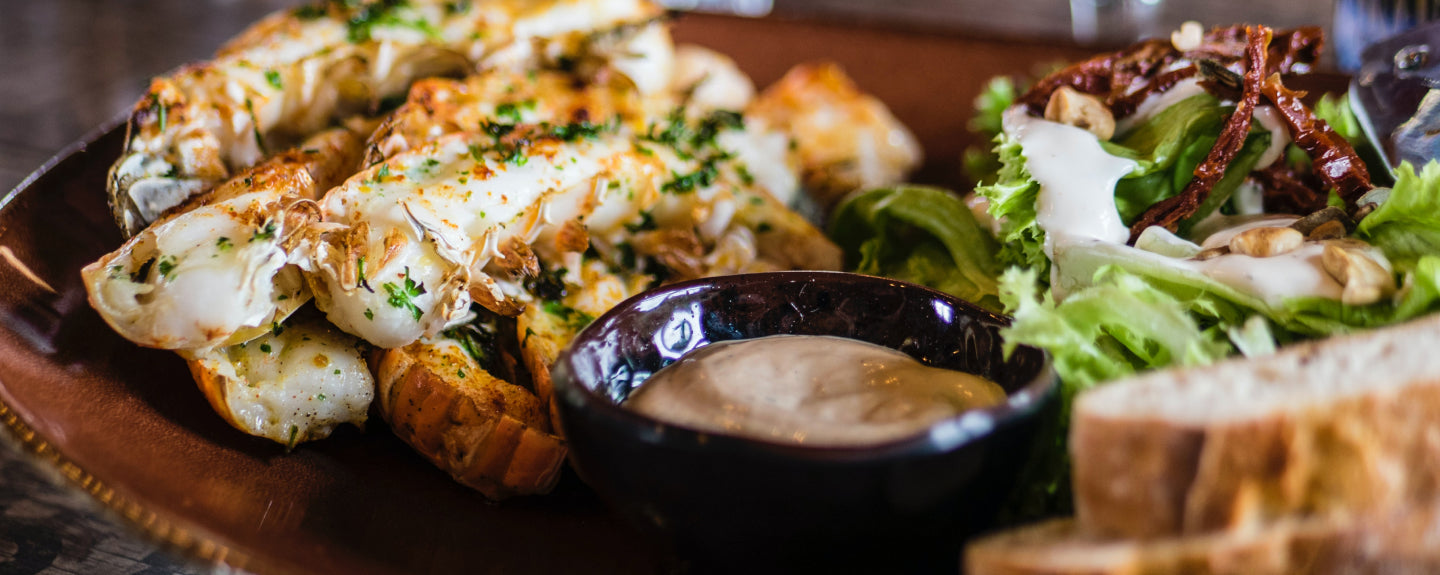
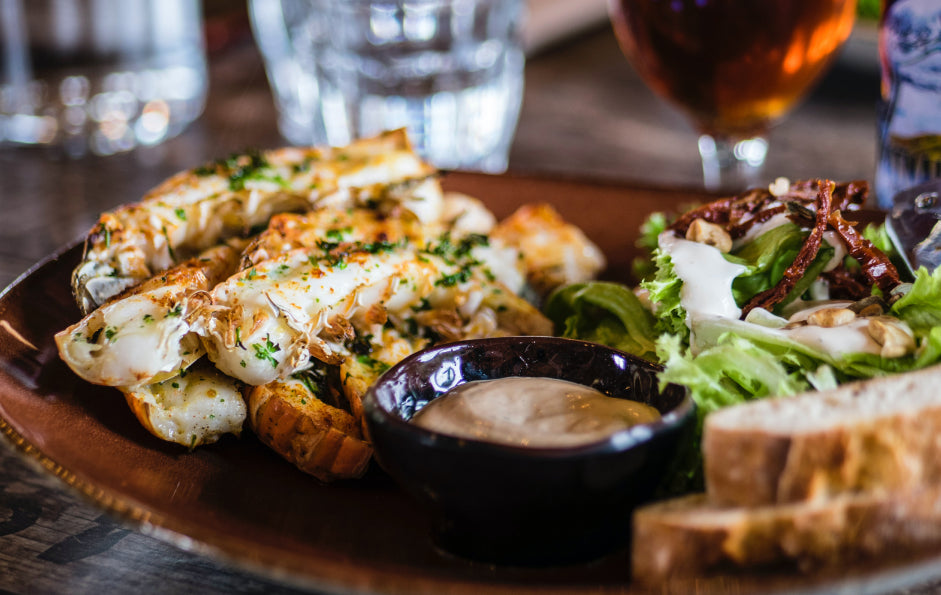
FAQs
The Fish Society was established by Alistair Blair 25 years ago and, today, we are the UK's premier online Fishmonger. We stock over 200 different types of seafood and we ship all over the UK!
We deliver 7 days a week and all our deliveries that are not to a remote postcode are delivered by DPD. Your order will leave us by 4pm the day before it is delivered to you.
For remote addresses (a list of which can be found here) we use the Royal Mail Special Delivery overnight service.
Your order is packed into an insulated box with dry ice to ensure your order stays frozen until the evening of the delivery day.
Most deliveries will arrive between 08:30am and 06:00pm. If your order is coming via DPD, they will give you a one hour time slot the morning of your delivery day.
Your parcel does not need to be signed for unless it is being delivered to a remote postcode. DPD instructs their drivers to leave the parcel in a safe place if you are unable to answer the door.
If you need to amend your order in any way, the best way to make sure this is done is to call us on 01428 687768. We cannot amend items in your order on the date of dispatch i.e. the day before you have chosen to have your order delivered. We would be happy to make changes to your order before the date of dispatch.
You can cancel your order by calling us by 10am on the day before your delivery date.
The majority of our range is frozen. Check the key properties of each item to check if it is a frozen product or not. We guarantee that it is of the highest quality and we welcome your feedback if you don't agree.
Why do we sell frozen fish? Because we believe that freezing fish soon after it is landed (typically 1-4 days depending on the type of fish and where it is coming from) gives you a better experience than eating fresh fish that may have been kept chilled for up to a week.
We believe that OUR frozen fish will give you the same eating experience as buying fish at the quayside and eating it straight away.
Frozen fish is highly convenient and unlike fresh fish, it does not need to be eaten immediately.
Because a lot of frozen fish is indeed of inferior quality at the point of being frozen.
Not all fish is of equal quality when landed. It is a natural consequence that frozen processors tend to buy the less expensive, inferior fish, thus traditionally leaving the better, more expensive fish, for the fresh fish trade. We buy our fish alongside the fresh fish processors, paying whatever price is necessary to maintain our reputation for quality.
If you buy fresh fish to freeze yourself, then unless you are dealing with only a small quantity, you are unlikely to get a good result. Freezing fish is a specialist process and needs to be completed very quickly - ideally within minutes. The longer the process takes, the larger the ice crystals formed in the fish. These crystals harm the muscle structure and result in a disappointing eating experience. You will not be able to freeze fish quickly enough in your home freezer, which will take ten or twenty times as long to freeze fish as a commercial freezing plant.
Furthermore, frozen fish needs to be protected from the cold air surrounding it, which also harms the muscle structure. To prevent this harm, frozen fish should be vacuum-packed before freezing or lightly "glazed" after freezing.
We might add that buying fresh fish is absolutely no guarantee of quality anyway. As you know, fresh fish deteriorates very quickly. By the time it has made it's way from the quayside to your fridge, it is often inferior to fish which was selected for quality immediately after being landed, and frozen straightaway.
Frozen fish often has an ice glaze. After freezing, the fish is briefly dipped in water resulting in a thin layer of ice being added.
Glazing helps protect fish from "freezer burn" which is the process of cold air drying out the fish. You will be familiar with freezer burn from your home freezer - it affects anything that is not tightly wrapped. The ice glaze is a sort of tight wrapping.
Historically, glazing was often abused. Many processors added extra glaze to make their fish appear cheaper. Historically, a pack could include up to 50% water in the worst cases - without this being stated.
Depending on the shape of a type of fish, an "honest" glaze will add 5% to 20% to the weight. A lemon sole fillet is large and thin - the honest glaze will be about 15%-20%. The honest glaze on a cod steak would be about 7%.
Defrosted Weight
The pack weights on our website and labels are all deglazed weights. Thus, if the fish weighs 1000g including a 20% glaze, we tell you the weight is 800g. However, that fish may still weigh less than 800g when you defrost it. This is because the process of freezing and defrosting fish causes some of its natural moisture to leak out. Typically the loss of weight involved here is 5%-8%.
Most of our lines are frozen separately. Those which are frozen together are:
Langoustines and some kinds of whole king prawns (our peeled prawns are always individually frozen), which would be damaged if allowed to jostle against each other. However, you can easily separate the fish you want to eat now from the rest by holding the fish under a running cold water tap to melt the ice between the fish. This task should never take more than two minutes. Wrap the fish you don't need and return it to the freezer.
Herring melts. It's just not economic to freeze small and floppy melts individually so they are frozen into a 450g/1lb block. You can still, however, use some now and keep the rest for later by allowing the block to "semi-thaw" for a couple of hours, then cutting it or pulling it apart. When you have separated it into portion-sized quantities, you can refreeze them. As long as you do not allow the block to come up to room temperature, you will not come to any harm from doing this.
Kippers. Kippers freeze best when frozen in pairs, open side to open side. This helps protect the fish. However, you can semi-thaw your pair of kippers and tease them apart in just the same way (in fact more easily) as the melts.
Fish is a global industry. More than half our products are sourced from abroad, via a complex supply chain. It's difficult for us to be sure what conditions pertain at the beginning of the chain. No mainstream fish retailer - us included - can put his hand on his heart and say "Everything I sell was caught or farmed in a sustainable manner".
That said, when we can see a clearly sustainable option, we take it. Our cod and haddock fillets come from Norway and Iceland, where strong government controls ensure fish stocks are well-managed. Our farmed fresh salmon comes from organic sources whenever possible. Most of our wild sea bass is rod-caught. We offer scallops which have been hand-caught by divers. (We also offer dredged scallops because the cost of diver-caught scallops is very high, but we tell you which kind of scallop you are buying and leave you to make the choice.) We could source many fish at a lower cost, but we have made choices which we believe are right.
Nevertheless, some fish in our range provoke hard questions from environmentalists. These include tuna, whitebait, king prawns, eel and skate. These fish are all popular and widely available at present. The neat choice of dropping these fish from our range would decimate our business with no practical effect on supply. Only governments can prevent catching of over-exploited fish or the development of unsustainable fish-farms.
Three reasons why we are different from your Supermarket counter:
1) We stock more kinds of fish than any other fishmonger - over 200 varieties
2) The quality of our fish is never compromised. All our fish is freshly frozen very soon after landing. Frozen fish should be defrosted only at the point of cooking and certainly should never be "left around" even if kept on ice. Many supermarket fresh fish counters and retail packs sell defrosted fish as if it was fresh.
3) We always seek to buy the highest quality grades of fish. This usually means, amongst other things, that we buy larger grades of fish. For instance, there are 12 grades of scampi based on size and glaze. Ours is the best and most expensive. It is large and totally unadulterated. It's expensive but it makes for fabulous eating. We always try to supply the best without compromise.
It goes without saying that seafood is renowned for it's powerful health benefits. Not only is it low in fat - it's full of protein which makes you feel fuller for longer.
Your skin, hair and nails are largely affected by your diet. Eating seafood regularly will give your skin a radiant glow, help you grow luscious long locks AND strengthen your nails. Oily fish such as salmon, mackerel and herring are an excellent source of omega-3 which are extremely important for hydration and sealing in moisture.
Seafood is packed with protein, which contributes to the growth and maintenance of muscle mass and stronger bones. It is a great source of vitamin D which is a crucial nutrient that helps regulate the amount of calcium and phosphorus in the body to maintain muscle and bone health to support a healthy immune system.
Iron and zinc, found mainly in shellfish, play a role in supporting healthy cognitive function, crucial for brain power.
Eating fish has been linked to better heart health, helping to keep your ticker in tip-top shape and maintain healthy blood pressure.
Most of our product packs have preparation directions. We also have a huge recipe library which is freely available on the recipe link at the bottom of our home page. If you can't find what you're looking for, call us on 01428 687768 - we'll be delighted to help.
Membership FAQs
As a Society Member, you’ll unlock exclusive benefits like Society Pricing, giving you year-round discounts on Fish Society best sellers, allowing you to stop paying full price and enjoy exclusive savings. Plus, enjoy the convenience of guaranteed noon delivery, perfect for weekday meals or last-minute dinner parties. As a member, you'll also earn double points per pound spent, adding even more savings to your seafood shopping experience throughout the year.
Membership is priced at £5 per month and will be billed every 30 days.
You have the flexibility to cancel your society membership at any time. Simply go to your account page, select paid membership and select the option to cancel. There are no long-term commitments, and the cancellation process is straightforward, ensuring that you can stop your service without any hassle. Please note that any remaining access will continue until the end of your current billing cycle, after which your subscription will officially end.
To join our membership programme, simply visit the membership page and click Join. Follow the prompts to enter your payment details and complete your registration. Alternatively, you can add the 'Society Membership' directly to your basket during checkout.
All of our products are available at Society Pricing, but the selection of items offered at these special rates will vary throughout the year. We change the selection to align with seasonality, availability, and to offer you the freshest and most sustainable choices at the best value. This ensures you always get access to a rotating range of premium seafood.
There's no minimum order required. While standard delivery charges still apply, you'll enjoy a complimentary upgrade to our "By Noon" service for faster delivery.
Yes, as a member, you'll enjoy early access to new products and exclusive offers tailored just for you!
To reach our customer support team, simply call us at 01428 687 768 or send an email to customerteam@thefishsociety.co.uk. We’re here to help!
We accept payments via credit/debit cards and PayPal for your convenience.
To update your billing information, simply visit your Membership Page and select "Update Payment Details." You'll receive an email with a secure link to update your card information quickly and easily.
If your payment fails, your membership will be cancelled. However, you'll continue to enjoy all membership benefits until the end of your current billing cycle.
New In
Find exactly what you want. We sell 200 kinds of fish - way more than anyone else.
